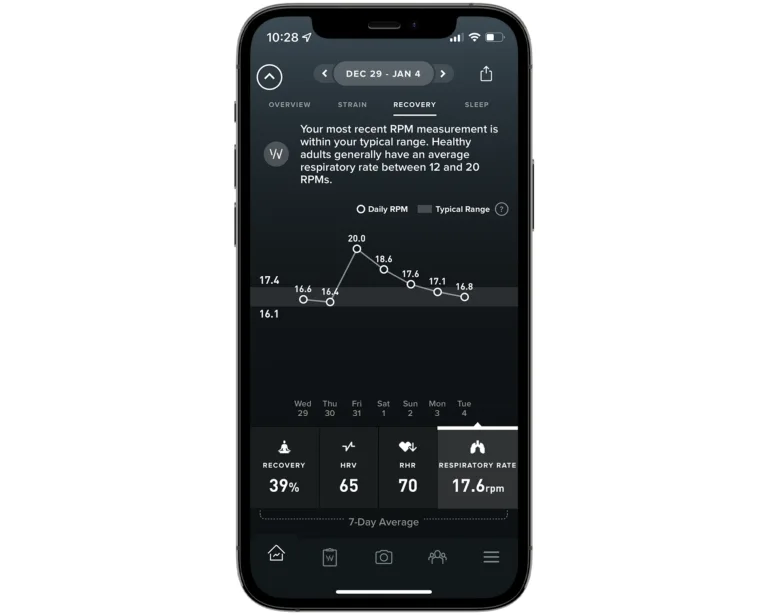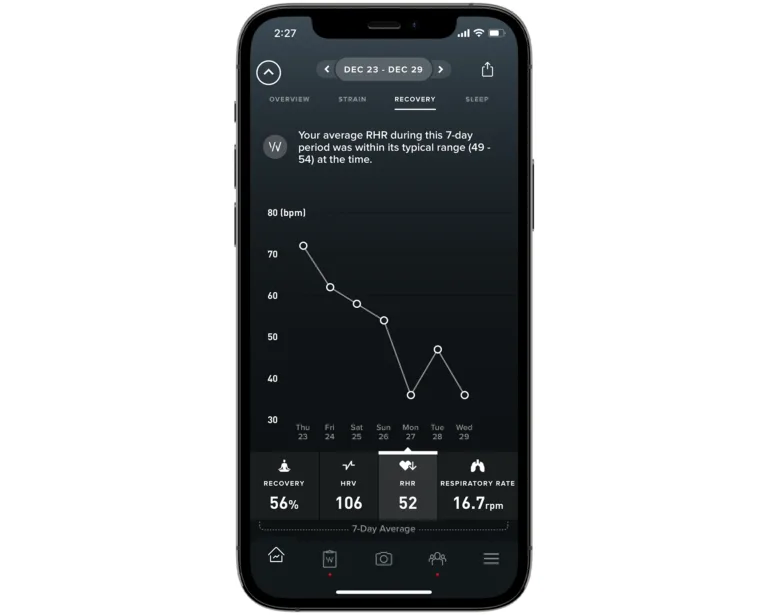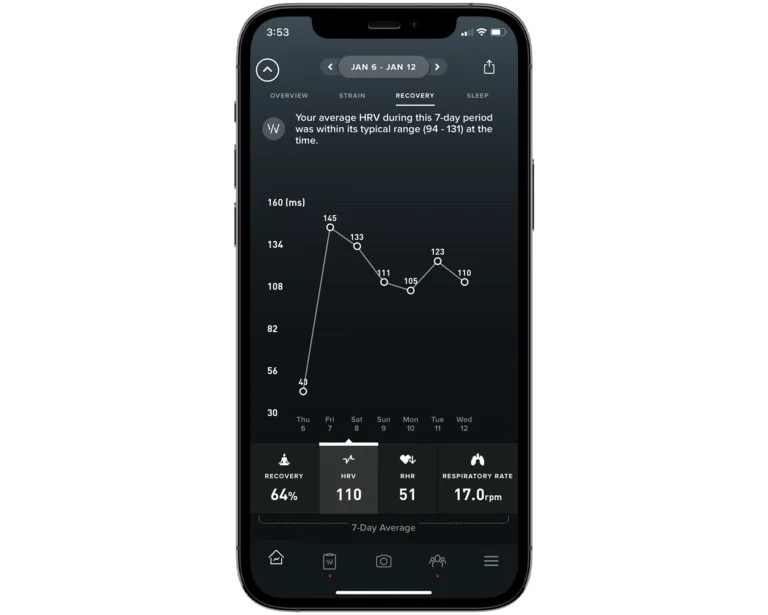Topics
- Article
- Respiratory Rate
What Does an Infection Do to Your Respiratory Rate?

WHOOP members share their data during recent illnesses, showing how respiratory infections have more symptoms than runny noses and coughs, they also affect your heart rate, respiratory rate, and HRV.
Respiratory infections affect parts of the body involved in breathing, including the sinuses, windpipe, and lungs. They become inflamed, causing general misery if not serious illness. While outwardly noticeable symptoms are often things like coughing, sneezing, and body aches, respiratory infections have other less obvious signs too. WHOOP members often notice changes in their data, in particular respiratory rate, resting heart rate, and heart rate variability. Three of our members who recently got over respiratory infections shared examples that illustrate how their metrics changed before, during, and after their illnesses.
Respiratory Rate May Increase Before Illness
Respiratory rate, or how many respirations (breaths) you take per minute, typically ranges from 12 to 20 rpm. During an infection inflammation and mucus can make it harder to take breaths, leading to increased respiratory rate. Rapid shallow breathing or tachypnea means you take more breaths than usual each minute. Illnesses including pneumonia, flu, and COVID-19 can cause increased respiratory rates. Examples of recent WHOOP data shows how respiratory rate can change during a respiratory illness. Respiratory rate does not generally vary much from day to day, so a change of two rpm can mean something significant is happening. In Example A, a WHOOP member rang in the New Year with a fever, body aches, upset stomach, and fatigue, but says she didn’t get tested for COVID-19 after thinking her symptoms were another infection. She said her respiratory symptoms were only noticeable in her WHOOP data, which increased from her typical range of 16-17.5 up to 20 rpm while she was ill. WHOOP reports respiratory rate during sleep by calculating it from heart rate data through a phenomenon known as respiratory sinus arrhythmia. Simply put, when we breathe in, our heart rate increases and when we breathe out our heart rate decreases, allowing us to preferentially pass blood by the lungs while they are full of oxygen. Because our autonomic nervous systems increase heart rate during inhalation and decrease heart rate during exhalation, we can see the respiratory rate in continuous heart rate data by looking for this cyclical increase/decrease pattern.

Example A: WHOOP member noticed her respiration rate increased in December but tested negative for COVID-19.
Resting Heart Rate Convinces Member to Get Retested
You may notice your heart beating faster when you’re not feeling well. Respiratory infections can increase resting heart rate (RHR) as your heart has to work harder to get oxygen to your organs. In Example B, a WHOOP member was told December 22 that she was exposed to COVID-19. On the 23rd she tested negative for COVID, but her resting heart rate increased to over 72 bpm, well above her typical range of 49-54 bpm. She continued having a higher than average RHR for four days. She said her abnormal data convinced her to get tested again, and she tested positive on the 27th.

Example B shows how a WHOOP member’s resting heart rate spiked after being exposed to Covid-19. Her RHR stayed above norm for four days before it returned to baseline.
HRV Shows Member's Body Fighting Illness
Heart rate variability (HRV) is a measure of your autonomic nervous system and one of the best objective metrics for physical fitness, and for determining your body’s readiness to perform. A high HRV means your body is physically ready to perform, but a low HRV may indicate a problem such as fatigue, dehydration, or illness. In Example C, a WHOOP member began feeling sick January 5, and his HRV dropped the next day to 43. He tested negative for COVID-19 that week. By January 9 his HRV was back to his typical range of 94-131.

Example C: A WHOOP member experienced very low HRV the day after he began feeling ill. He tested negative for COVID-19 and his HRV was back to normal shortly afterwards.
Monitor your Health with WHOOP
The WHOOP Health Monitor gives you the ability to observe your daily health metrics so you can learn what’s normal for you. Knowing your average RHR, respiratory rate, and HRV can help you figure out when something might be wrong. Learn More: COVID-19 Research, Data & Resources: Tips for Tracking Your Health During a Pandemic The products and services of WHOOP are not medical devices, are not intended to diagnose COVID-19, the flu or any other disease, and should not be used as a substitute for professional medical advice, diagnosis or treatment. All content available through the products and services of WHOOP is for general informational purposes only.